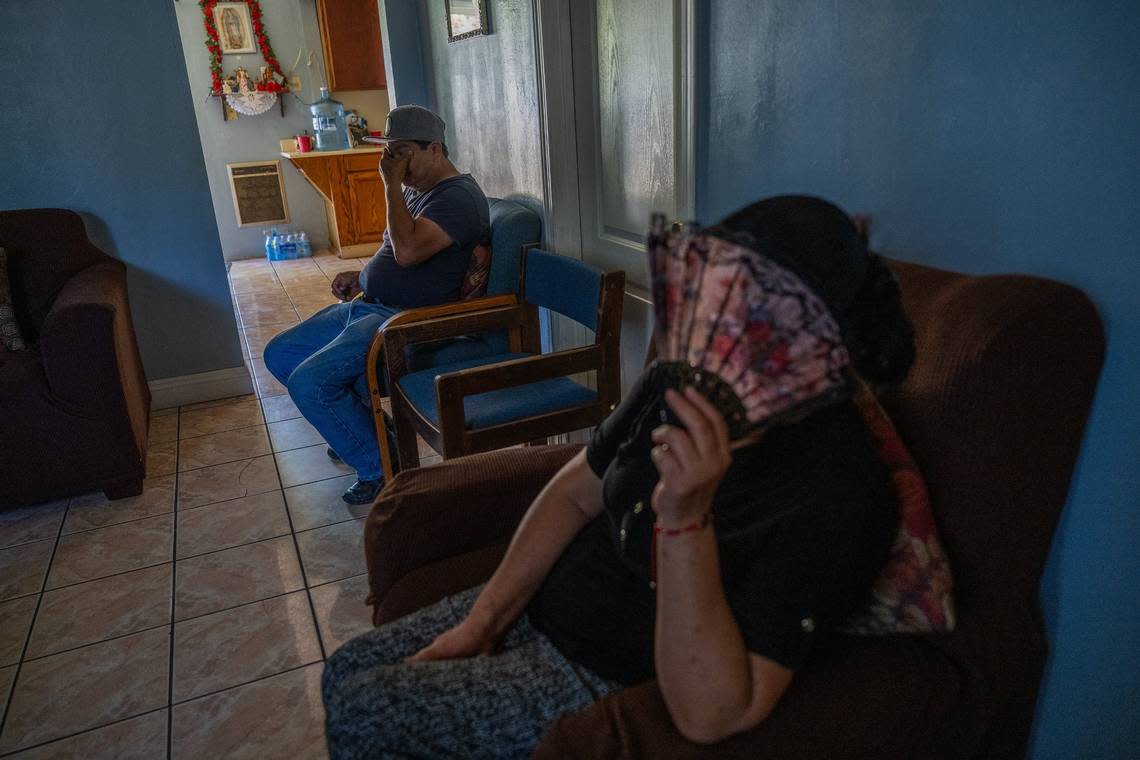Sacramento County’s climate plan is changing. Advocates want more help for low-income areas

Local advocates want Sacramento’s disadvantaged communities to be a focus in the county’s response to climate change per the newly revised Community Countywide Climate Action Plan.
The 400-plus page climate document is a road map for county government and the unincorporated county to address the ever-present effects of extreme heat, prolonged drought and extended wildfire seasons on the Sacramento region. Leaders tout the plan as a comprehensive strategy for reducing greenhouse gas emissions to meet California’s 2030 and 2045 clean air targets.
But the county plan cannot leave communities behind, said Faye Wilson Kennedy, chair of the Sacramento Area Black Caucus. The caucus is a coalition that includes the Southeast Village Neighborhood Association, the Red, Black and Green Environmental Justice Coalition and Sacramento Poor People’s Campaign.
Black, brown and other people of color living in the county’s disadvantaged communities are disproportionately shouldering the effects of extreme heat in homes with little or inadequate air conditioning, in neighborhoods with little natural shade, Kennedy said.
“The county in the last three or four years has really been trying to listen to the community, but a lot of traditional environmental groups have their ear,” Kennedy said. “They don’t have a lot of people of color helping them to see these things.”
She cites the risks of heat-related death for those living outdoors and residents struggling to stay cool in the county’s underserved neighborhoods. The county’s 2024 draft climate plan and the concerns by Sacramento Area Black Caucus came during a month that saw extended stretches of punishing triple-digit heat in the Sacramento region, at least two heat-related deaths and another destructive round of wildfires including the Park Fire, now among the largest in California history.
What advocates think the county should do
As the county takes public comment on the plan, Kennedy is calling to support neighborhood solar-powered cooling and warming centers, plans to provide sufficient air conditioning during extreme heat, and programs to retrofit existing buildings so that air conditioning can be installed where people live.
“A climate resilient and magnanimous city, county and state is built by investing in all people — (particularly) the poor — not by neglecting them,” Kennedy said in a statement. “It starts with the stabilizing power of safe affordable housing with an environmentally friendly air conditioning system (and) clean and breathable air free of toxins.”
She points to a 2021 Environmental Protection Agency study. Among its findings: “the most severe harms from climate change fall disproportionately upon underserved communities who are least able to prepare for, and recover from, heat waves, poor air quality, flooding, and other impacts.”
“We come to the table with existing health issues — upper respiratory ailments, high blood pressure,” conditions that are exacerbated by extreme heat, she said. “In neighborhoods like Oak Park, Del Paso Heights, we need to make investments in those older neighborhoods.”
The draft action plan, completed in mid-July, revises Sacramento County’s 2022 Communitywide Climate Action Plan to add growth projections for future development projects. The plan also strengthens how measures to reduce greenhouse gases will be put into effect and is paired with an environmental impact report to detail the climate plan’s potential impacts.
Sacramento County in its broader general plan acknowledges the disproportionate impacts of climate change on what it labels its “Environmental Justice Communities” — North Highlands/Foothill Farms, West Arden-Arcade, North Vineyard and South Sacramento, areas defined as “Low Income High Minority,” by the Sacramento Area Council of Governments.
Climate action plan-related fee mitigation, incentive programs and other county-funded programs would prioritize the environmental justice communities as part of the plan.
“Climate change presents new challenges and exacerbates existing challenges, but also serves as an opportunity for the county to invest in policies and infrastructure to address climate related issues,” the plan’s authors say in its introductory remarks.
Within the four areas considered disadvantaged compared to other areas of unincorporated Sacramento County,residents are more vulnerable to heat stroke and heat exhaustion due to the neighborhoods’ lack of robust tree canopies — the urban forest that gives Sacramento its “City of Trees” moniker.
“Sacramento is the ‘City of Trees,’ but that’s mostly for the privileged communities. We can do better.” Kennedy said Sacramento city and county must work more closely to connect neighborhoods and nonprofits such as the Sacramento Tree Foundation to reestablish shade canopies in underserved areas, where “there’s more concrete than trees.”
Public comment on the climate plan and its environmental impact report extend to 5 p.m. Aug. 29. Both are available for public review and comment on the Planning and Environmental Review website.
Sacramento County staff will present the plan to the county’s Climate Emergency Mobilization Task Force on Aug. 8. A presentation to the Sacramento Environmental Commission follows on Aug. 19.
